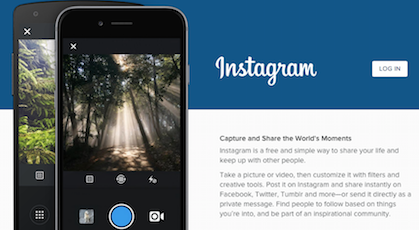When I first checked out the Kickstarter campaign, Low Tide Toss: Vintage Beach Game Revamped, they had raised about $3,000 in the first week of campaigning. The idea was simple: Bring a family tradition and fun east coast game to beaches all across America.
After a quick glance, I came away extremely impressed with their video. In addition to compelling and descriptive narration, it had great images, professional footage, a smooth storyboard, and a clear value proposition. Check it out!
Jump forward several weeks, and they are now down to the last 24 hours of their campaign. They have grown at a consistent rate and have raised $10,340 at the time of writing.
Many campaign owners see some initial success at the beginning of their campaign, but are unable to maintain this progress for a full 30-60 days, despite hard work and constant marketing. The team behind Low Tide Toss has managed to overcome one of the biggest hurdles project owners must face, keeping the pledges flowing in.
Daniel Johnson, the Co-Founder and CEO of Low Tide Toss was nice enough to answer a few of my questions to yield some insight into his campaign strategy and the preparations he made for the Kickstarter launch.
1. Have a compelling video with an enticing value proposition.
Check out their video here for a great example for your campaign.

Did you have a budget for the video, or did you guys do it yourself?
I did the video myself using a combination of a Sony Blogger Video Cam, the IPhone Voice APP (true story), Powerpoint, Windows Live Movie Maker, and Cyberlink Power Director 10. Power Director was the most expensive software of the bunch and the primary mainframe for the whole video. I got all the beach footage last summer before I even set out on my Kickstarter journey. For the music, I was lucky enough to have a brother who’s a pretty talented musician. He already had all of the necessary equipment to record on his end. In total, it probably cost me personally between $300-$350.
How long did it take to create from start to finish?
It took me about a month of hard work (on top of a day job) to get it finished. It only took one day of filming at the beach to get what I needed.
What are the conversions like for the video from your Kickstarter analytics?
Out of 489 video views, 29.86% of people completed the video and we’re up to 56 backers (at 3k point). I’m a little concerned about that percentage, but I have no comparable projects to go by.
2. Create a marketing strategy
Can you explain a bit about your marketing strategy?
About half of our pledges came from friends and family. Marketing consisted of heavy Facebook promotion and sharing, specifically reaching out to fan pages of big beach towns. We also sent out mass emails to family and co-workers past and present.
We reached out to a beach town fan page with 99k followers and the gentleman that ran it loved our idea and wanted to help us out. Turns out he ran another beach page with 66k followers too. His posts led to a huge boost that took us from 50% of our goal with 9 days remaining to 100% with two days to spare.
3. Begin preparing as early as possible
Anything you wish you knew before starting the campaign?
I spent months researching kickstarter tips and tricks so there weren’t many surprises. I would say that beforehand its easy to hope that Kickstarter will make your project a “staff pick.” I certainly did. But the reality is, it’s not something you can count on happening.
In conclusion
Unless you have a major social media following or are well-networked, in my experience, the quickest way to boost your funding levels is to identify and successfully market your campaign through established channels that reach your intended audience. Daniel mentioned having gained 50% on his funding goal from two beach-centric facebook pages.
If you know that your product fits a market need, I would be more than willing to pay to reach these types of audiences if you are unable to form a partnership or persuade influencers to help out with marketing your campaign. In addition, you could form an affiliate marketing relationship with these influencers so that they benefit from any pledges that you receive from their social media efforts.
Just be sure to do the math! An advertisement opportunity that costs $4,000 and is expected to bring in $5,000 worth of pledges might not be profitable if it eats away at your margins or puts you into the red after fulfillment costs. For more information about calculating fulfillment costs, see my previous article. Kickstarter Mistakes – Calculating Reward Fulfillment.
Did you find this article to be helpful? Consider Liking us on Facebook!





